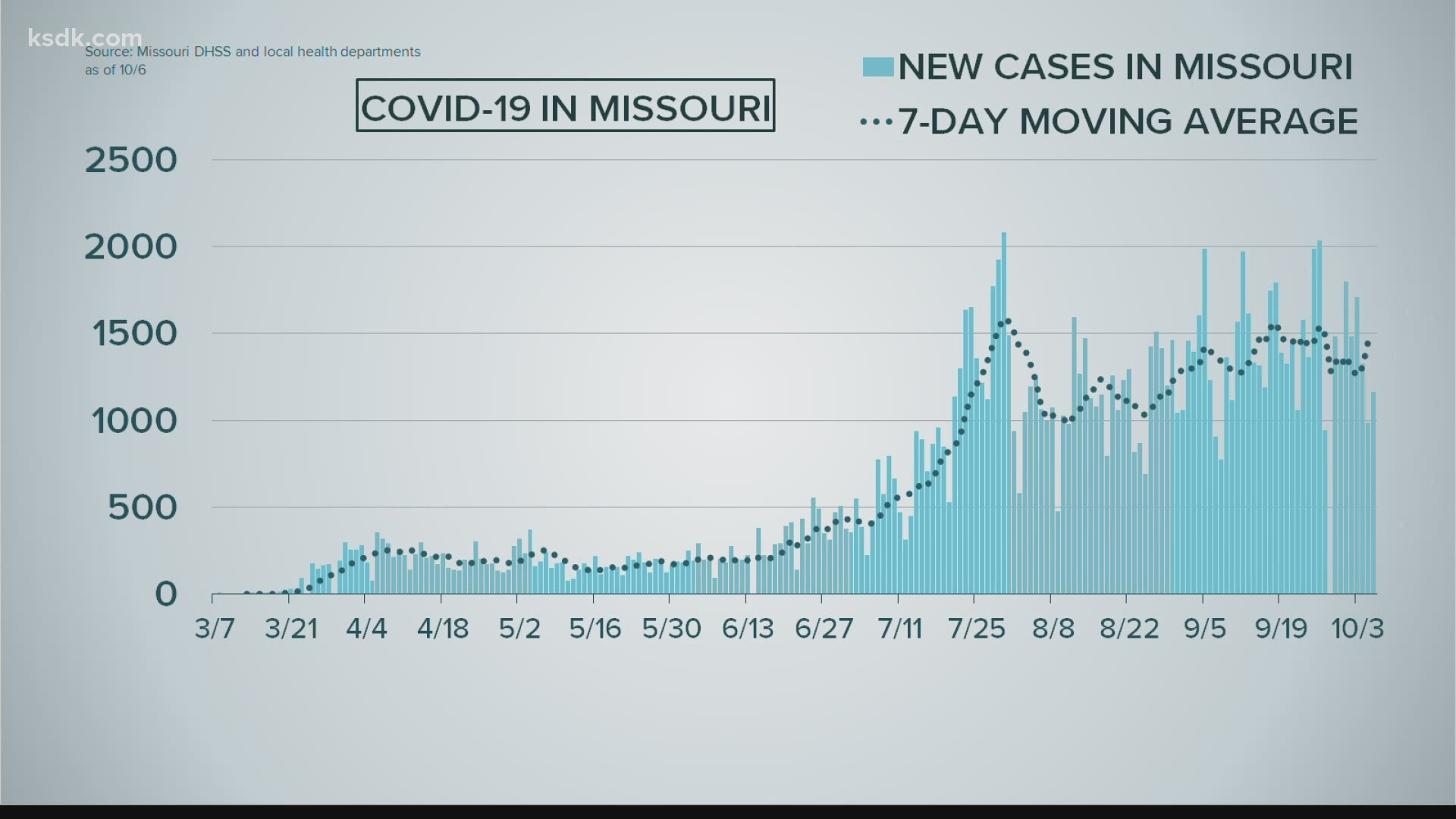ST. LOUIS — The leader of the St. Louis Metropolitan Pandemic Task Force said the number of new hospital admissions in the area has been volatile, a trend he said he believes will continue due to differing mitigation strategies.
After reporting fewer than 30 new admissions Saturday, Sunday and Monday, the task force reported 43 new admissions on Tuesday and 40 on Wednesday.
Dr. Alex Garza, the incident commander of the task force, said the volatility was likely due to the changes in case rates throughout the area.
"The most likely explanation is the variability in transmission in cases around the metropolitan area," Dr. Garza said. "And that's related to different mitigation strategies and in particular."
On Monday, Dr. Garza said hospital numbers continued to improve over the weekend, and most of the counties in the area saw fewer new COVID-19 cases than the previous week.
All the Missouri counties in the St. Louis area other than Lincoln County reported the same or fewer new COVID-19 cases week-over-week. The numbers were not as good in Illinois, where Monroe, St. Clair and Clinton counties reported more new cases than the previous seven days.
"We've seen some swings in our numbers within the past week, but hopefully we'll continue to see that trend go down," Dr. Garza said.
Although most counties saw week-over-week improvements, Dr. Garza said some counties are still seeing a high number of new cases.
Dr. Garza said while St. Louis and St. Louis County have continued to limit the spread, other parts of the area have continued to see increases in new cases. As a result, the task force said the area as a whole has a reproductive rate of 0.99. Anything below 1 means the region is interrupting the spread of the virus.
Here is a full breakdown of the task force data from Wednesday:
- New hospital admissions (data lagged two days) decreased from 43 yesterday to 40 today.
- The seven-day moving average of hospital admissions (data lagged two days) remained the same at 34 today.
- The seven-day moving average of hospitalizations decreased – from 254 yesterday to 250 today.
- Inpatient confirmed COVID positive hospitalizations increased – from 246 yesterday to 258 today.
- Inpatient suspected COVID positive hospitalizations increased - from 95 yesterday to 106 today.
- The number of confirmed COVID positive patients in the ICUs increased – from 75 yesterday to 76 today.
- The number of confirmed COVID positive patients on ventilators decreased – from 47 yesterday to 46 today.
- Across the system hospitals, 33 COVID-19 patients were discharged yesterday, bringing the cumulative number of COVID-19 patients discharged to 6,589.
On Wednesday, the Missouri Department of Health and Senior Services reported 135,651 confirmed COVID-19 cases and 2,236 deaths, a single-day increase of 1,068 cases and 36 deaths.
The department reported a total of 1,958,461 tests conducted, an increase of 11,857 in the last 24 hours. The state said a total of 1,367,139 people have undergone a PCR test, an increase of 8,471 in the last 24 hours.
The department uses the number of people who have had a PCR test to calculate the positivity rate. On Wednesday, the department said the seven-day average positivity rate in the state was 13.7%, down from 14.0% on Tuesday. The seven-day average is delayed by 72 hours to improve accuracy, so the number reported Wednesday represents the seven-day average from Oct. 4.

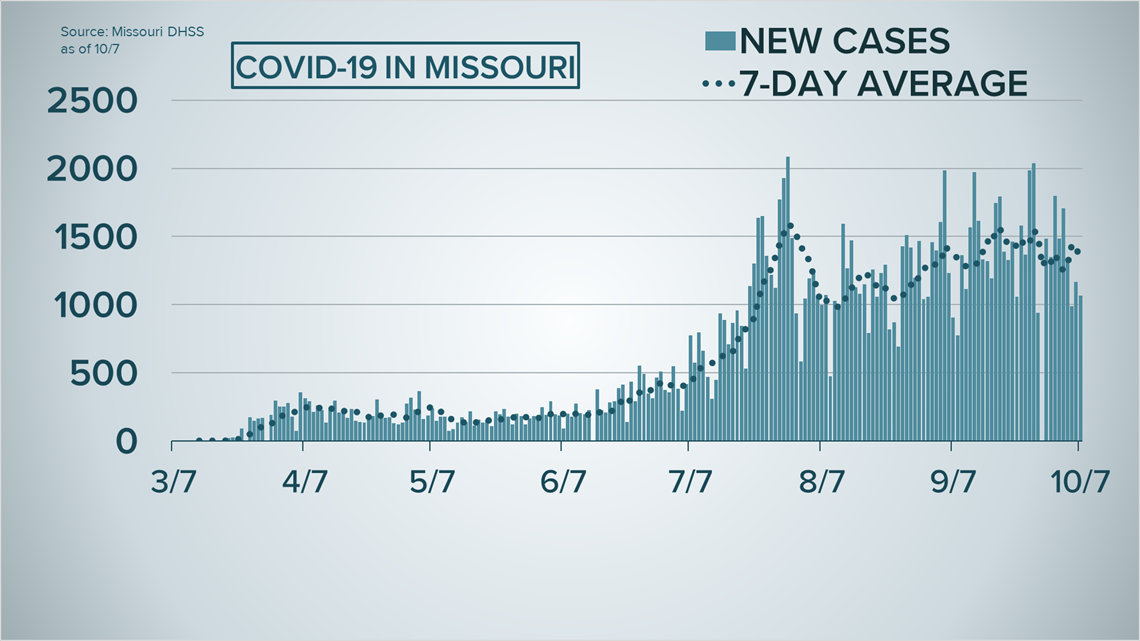

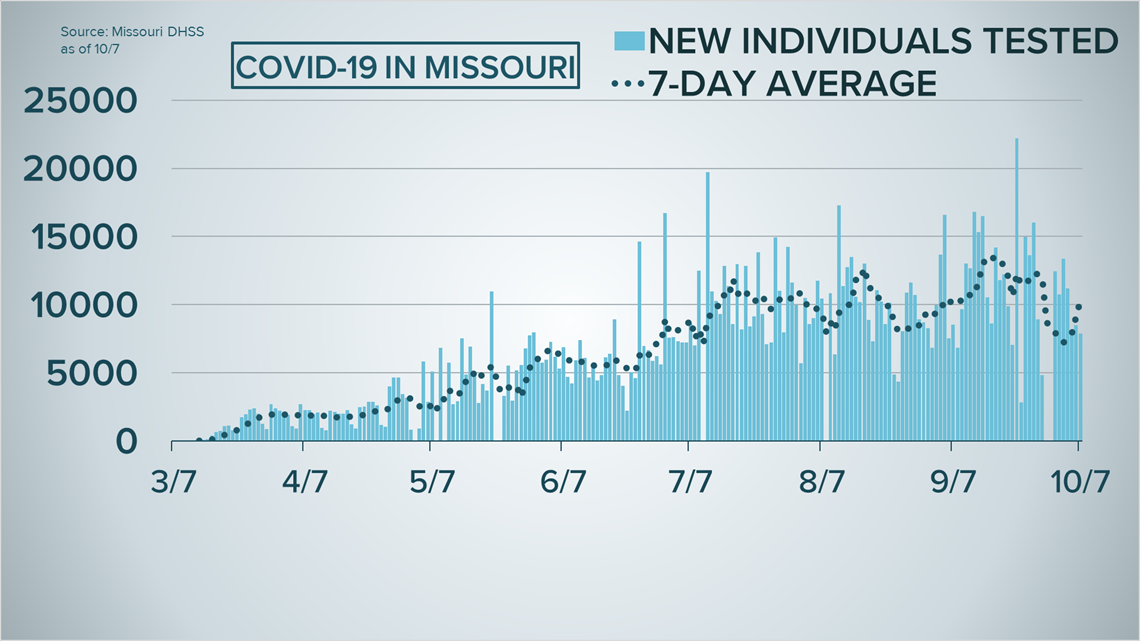

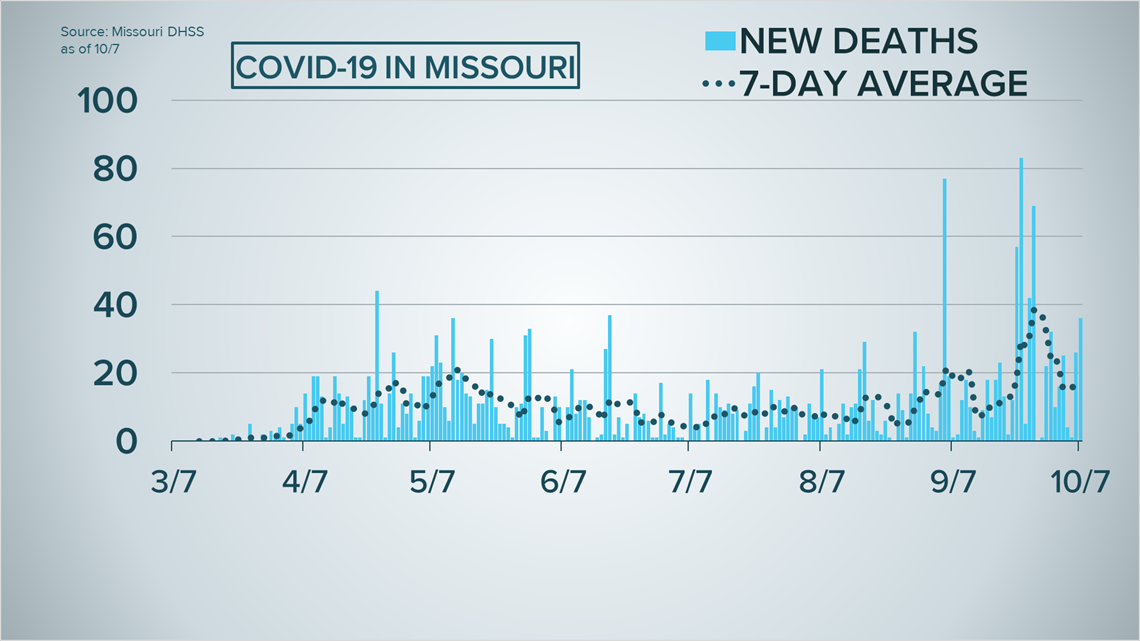

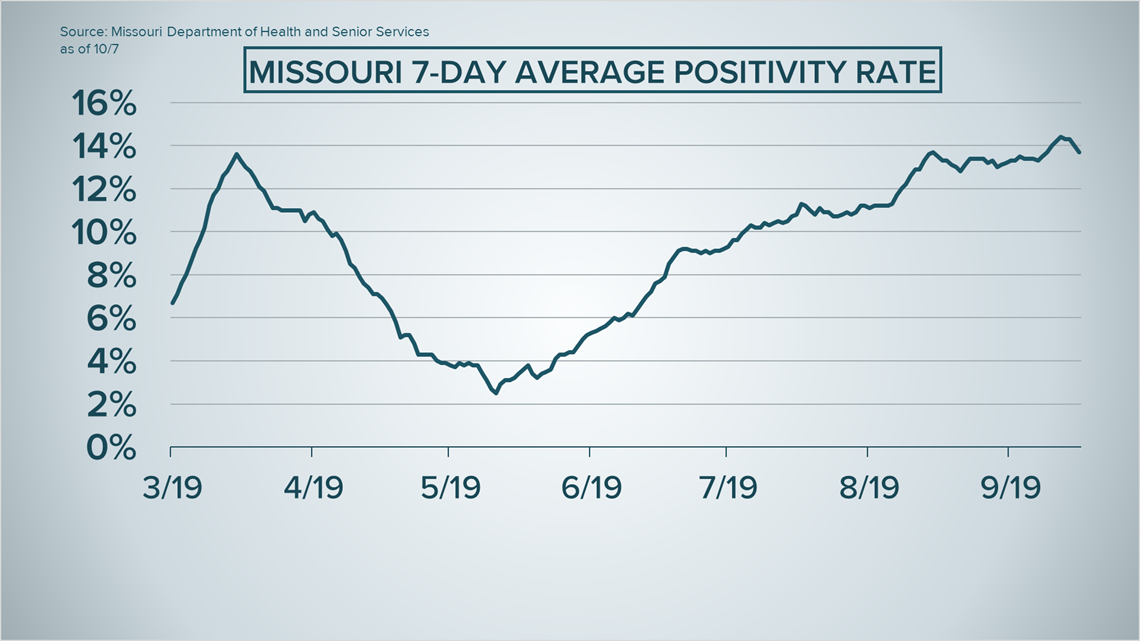
The health department updated hospitalization data to show the state reached a record high for the seven-day average of hospitalizations across the state Tuesday and remained the same Wednesday. The number reported Wednesday was the 7-day average for Oct. 6.

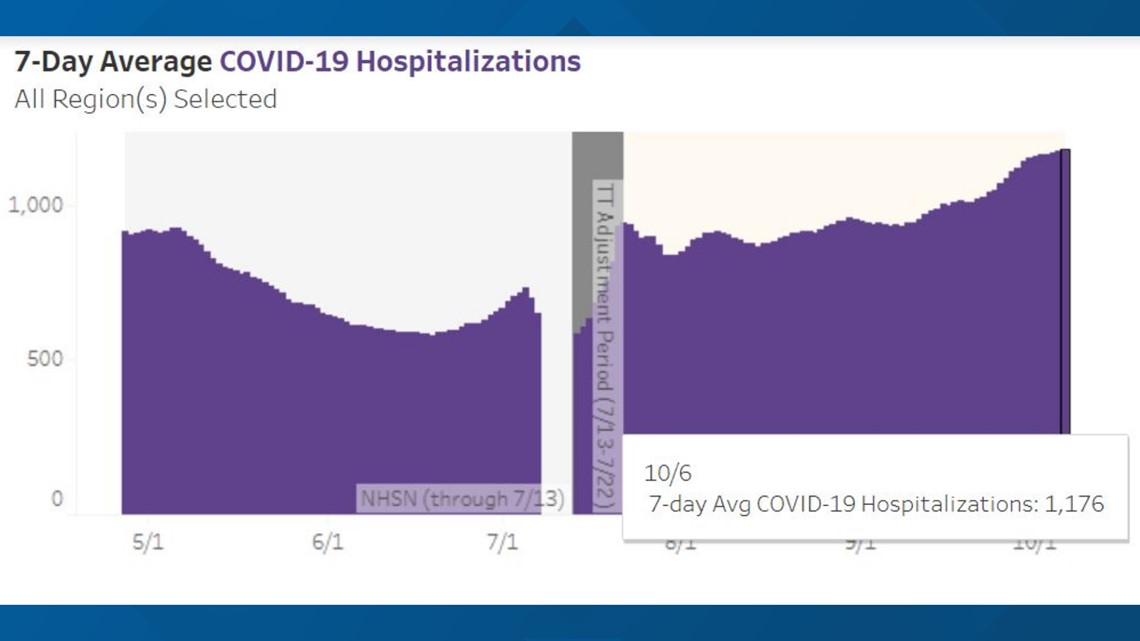
According to the dashboard, the state had a seven-day average of 1,176 hospitalizations each of the last two days, the highest the state has reported since the pandemic began.
Central, northwest, southwest and southeast regions of the state have seen the most significant increase in the state. The St. Louis area has seen consistent hospitalization numbers while the Kansas City area has seen hospitalizations slowly increase, according to the state's dashboard.

